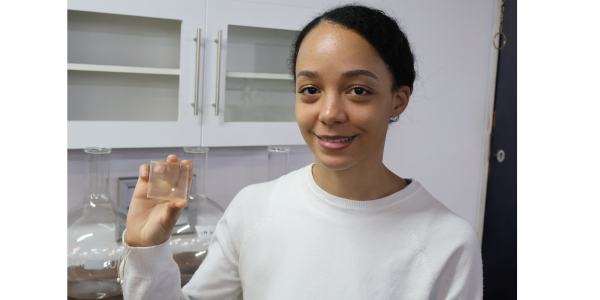Painless microneedle patches could transform HIV treatment for children
- Wits University
What if treatment could be as simple as putting on a plaster, twice a week?

For many families, giving a child daily HIV medication is a stressful, complicated task. Tablets must be crushed and carefully dosed as children grow. A missed dose, or just a small mistake, can have serious consequences. But what if treatment could be as simple as putting on a plaster, twice a week?
That’s the goal behind a new generation of painless microneedle patches being developed by Hannah Wellington, a PhD student at the Wits Advanced Drug Delivery Platform (WADDP).
These tiny patches are designed to deliver paediatric HIV treatment safely and reliably, giving caregivers an easier and more consistent alternative to tablets.
“Caregivers want to do the right thing, but the current system is quite burdensome”, says Wellington. “Our patches remove the guesswork. You apply them like a plaster, and they dissolve, delivering the right amount of medicine directly.”
Each patch is designed to provide slow-release, life-saving antiretrovirals (ARVs), reducing treatment from a daily struggle to just one or two applications per week. This is a lifeline for children in homes where treatment fatigue and access issues are real challenges.
What makes the technology even more promising is its practicality. At WADDP, the team can 3D-print the patches in-house and customise them for different age groups and dosing needs.
“What excites me is that this technology is both affordable and scalable. It can benefit the most vulnerable, especially children in rural and low-income communities, but it also has the potential to be translated to treat other diseases,” Wellington explains.
Although the current focus is on HIV, the underlying platform could be adapted in future to support other treatments. Wellington’s work is part of WADDP’s broader research in advanced drug delivery (which ensures medicine reaches the right place in the body); nanomedicine (which reduces formulations to the nano scale for improved targeting and fewer side effects); and tissue engineering (regeneration, including 3D bioprinting of human tissue).
This intersection places South African innovation at the forefront of global health science.
In Wellington’s project, these strands come together: the patch is the delivery vehicle, and nanomedicines are the cargo. This same approach is being investigated for preventative therapies like PrEP and could, in time, be extended to treat other conditions, including cancer.
This work is supported by the National Research Foundation (NRF) through the NRF/DSI SARChI Programme. Professor Yahya Choonara and Professor Mershen Govender supervise Wellington’s work.

